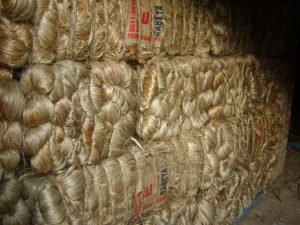Why our buyer all over the world

Jute Products of Rabeya
Bangladesh with her location in south East Asia has a long and rich historical and cultural heritage. She has a population more than 140 million. Total area of the country is above 147,570 sq km of which about 11.3 million (79%) hectare is flood plain. Bangladesh is an agro-based economy accounting for 30% of countries GDP and employing 65% of labor force. Jute is one of the major cash crops in Bangladesh. Jute, Mesta & Kenaf are commonly called jute and allied fibers in jute family. It is a ligno-cellulosic, composite bast fiber. It is a rapid growing, photo-reactive crop only 120 days are needed for its harvesting.
It grows abundantly in Bangladesh and India and moderately in Nepal, Thailand, China, Vietnam, Indonesia, Myanmar, Brazil and some parts of Africa.Jute is a long, soft, shiny vegetable fibre that can be spun into coarse, strong threads. It is produced from plants in the genus Corchorus, which has been classified in the family Tiliaceae, or more recently in Malvaceae. However, it has been reclassified within the family Sparrmanniaceae. Jute is one of the most affordable natural fibers and is second only to cotton in amount produced and variety of uses of vegetable fibres. Jute fibres are composed primarily of the plant materials cellulose (major component of plant fiber) and lignin(major components of wood fiber). It is thus a ligno-cellulosic fiber that is partially a textile fiber and partially wood. It falls into the bast fiber category (fiber collected from bast or skin of the plant) along with kenaf, industrial hemp, flax (linen), ramie, etc. The industrial term for jute fiber is raw jute. The fiber are off-white to brown, and 1–4 metres (3–12 feet) long.